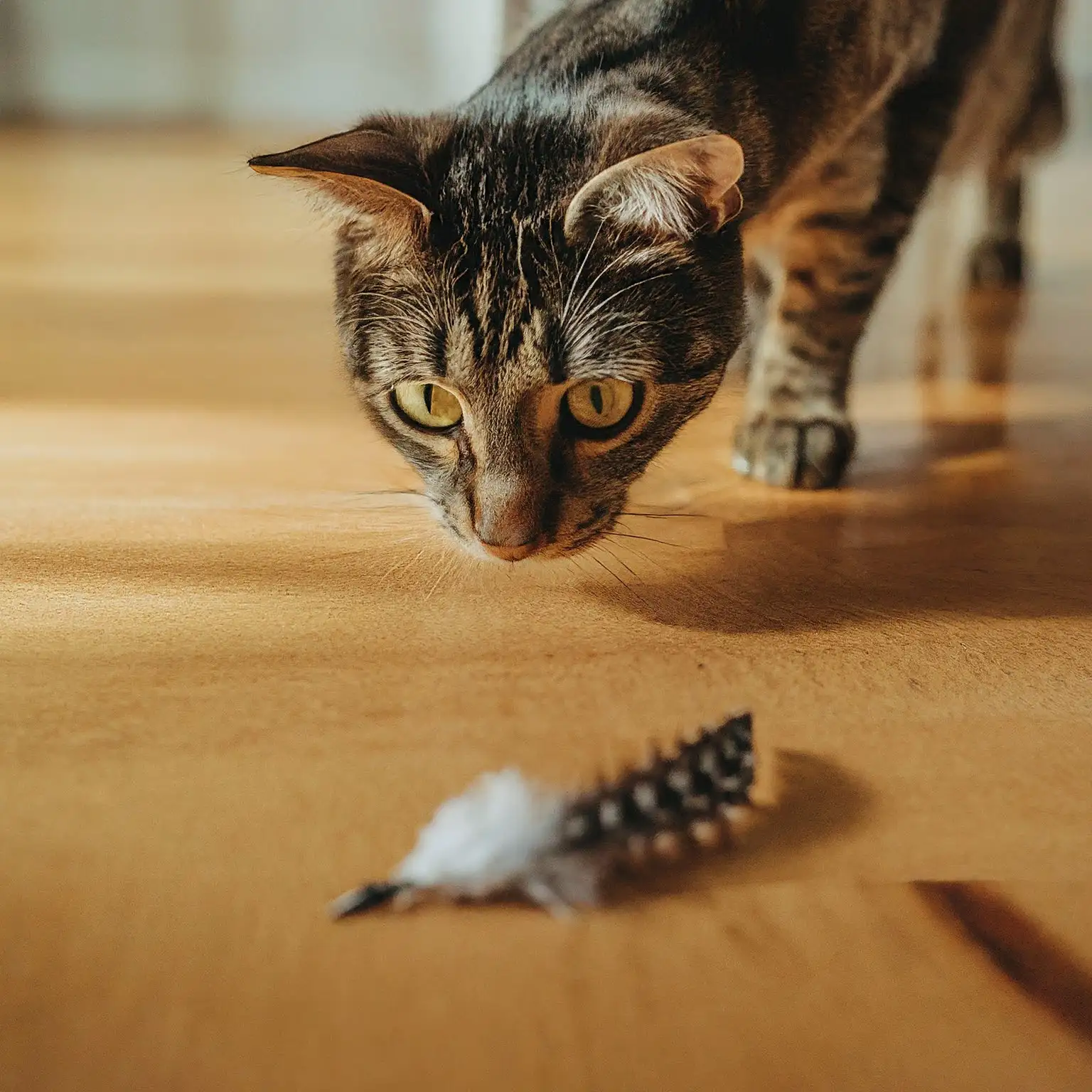Making Sense of the Cat Food Aisle
Cat Nutrition Myths: Strolling down the pet food aisle, bombarded with bags and cans claiming to be the absolute best for your cat, can be utterly overwhelming. From “grain-free” and “natural” to “holistic” and “limited ingredient,” the marketing buzzwords fly fast and furious.
But here’s the truth: the bright packaging and clever slogans don’t always reveal what your cat truly needs to thrive. Understanding the fundamentals of cat nutrition is essential for their long-term health and happiness.
This guide aims to cut through the confusion and empower you to make informed decisions about your feline friend’s diet. We’ll decode labels, bust common myths, and give you the knowledge to confidently choose a food that best aligns with your cat’s specific needs.
Your Cat, the Obligate Carnivore: What Their Diet Needs
Unlike dogs, who are omnivores, cats are true carnivores. This means their bodies are designed to obtain essential nutrients primarily from meat. Let’s look at a healthy cat’s dietary must-haves:
- Protein Power: High-quality, animal-based proteins form the building blocks for healthy muscles, tissues, and organ function.
- Fat for Fuel: Fats aren’t the enemy! They provide energy, aid in vitamin absorption, and keep your cat’s coat glossy.
- Water Works: Proper hydration is essential. Wet food generally has a higher moisture content than dry, encouraging water intake.
- Vitamins & Minerals: While needed in smaller amounts, these play crucial roles in everything from metabolism to immunity.
Food Formats: Finding the Right Fit
The three primary types of cat food offer some key differences:
- Wet (Canned) Food: Generally higher moisture content, appealing to some cats, but can be messier and costlier than dry.
- Dry (Kibble): Convenient, budget-friendly, but typically higher in carbohydrates and relies on the cat drinking enough water alongside it.
- Raw: Gaining popularity but controversial. May offer benefits, but risks include bacterial contamination and nutrient imbalance if not carefully formulated.
Quick Note: It’s always best to consult your veterinarian before switching food types, especially if your cat has any existing health concerns.
Decoding the Ingredients: What’s Really in the Bag?

The ingredient list and the guaranteed analysis on a cat food bag tell a story. Let’s learn how to read between the lines and go beyond the catchy marketing phrases.
- Order Matters: Ingredients are listed by weight in descending order. You want meat (chicken, lamb, etc.) as the first few items, NOT grains or fillers.
- Protein Powerhouses vs Fillers Learn to spot the difference between:
- Whole Meats: Clear source (chicken breast, beef, etc.)
- Meat Byproducts: Less desirable but CAN be nutritious (organs, etc.)
- Fillers: High in carbs, low nutritional value (corn, wheat)
- Guaranteed Analysis: This shows minimum percentages of:
- Crude Protein: Look for high percentages!
- Crude Fat: Moderate amounts are necessary.
- Crude Fiber: A little is okay for digestion, but excessive is filler.
- Moisture: Useful for comparing wet vs dry food.
- The AAFCO Statement: This indicates the food meets a basic nutritional profile for either kittens/growth, adult maintenance, or “all life stages”. It’s a starting point, not a guarantee of quality.
It’s Not One-Size-Fits-All: Choosing Food for Your Cat

While knowing how to read labels is essential, the “best” food isn’t the same for every cat. Consider these factors when selecting the right fit for your furry friend:
- Life Stage Matters:
- Kittens: Need high calories and specific nutrients to support their rapid growth and development.
- Adults: require maintenance formula based on their health and activity level.
- Seniors: May benefit from specially formulated food aiding with joint health, digestion, or slowing age-related issues.
- Activity Level: Lazy indoor cats have different requirements than adventurous outdoor cats. Adjust diet and portion sizes accordingly to avoid unnecessary weight gain.
- Health Concerns: Many diseases and health issues (kidney problems, allergies, etc.) might require special prescription diets designed to manage symptoms and keep your cat comfortable. Always consult your veterinarian for guidance.
Myth-Busting Time! Separating Fact from Fiction
Unfortunately, the world of pet nutrition is filled with misconceptions. Let’s debunk a few of the biggest ones:
Myth 1: “Grains are Bad for Cats”
- The Truth: While cats don’t require grains for survival, not all grains are created equal. Some provide digestible carbohydrates, fiber, and vitamins. The problem arises with overly processed grains used as cheap fillers in low-quality foods.
Myth 2: “Cats Need Milk for Strong Bones”
- The Truth: Most adult cats become lactose intolerant. Cow’s milk may cause digestive upset, offering little nutritional value. Fresh, clean water is a cat’s best hydration source for healthy kidneys and overall well-being.
Myth 3: “The Most Expensive Food is the Best”
- The Truth: Price isn’t always an indicator of quality. Savvy marketing and trendy ingredients can inflate costs. Focus on quality ingredients over flashy packaging and brand names.
Fact-Finding:
When in doubt, look for credible sources of information:
- Your Veterinarian: They understand your cat’s specific needs best.
- Reputable Websites: Sites focusing on feline nutrition, often run by vet specialists, offer unbiased advice.
- Look for Research: Avoid websites relying solely on personal opinion or anecdotes.
Conclusion: Confident Decisions for a Thriving Cat

Navigating the world of cat nutrition doesn’t require a veterinary degree! By understanding the basics, scrutinizing labels, and dispelling common myths, you have the power to make informed choices that support your cat’s health and well-being.
Remember, your veterinarian is your greatest ally in your cat’s nutritional journey, particularly if health concerns arise. They can offer personalized guidance and recommendations tailored to your cat’s specific needs.
Every cat is an individual, so don’t be afraid of a little trial and error as you find the food that helps your feline friend feel their absolute best. The commitment you’ve shown by seeking reliable nutritional information will pay off with a happy, healthy cat for years to come!




